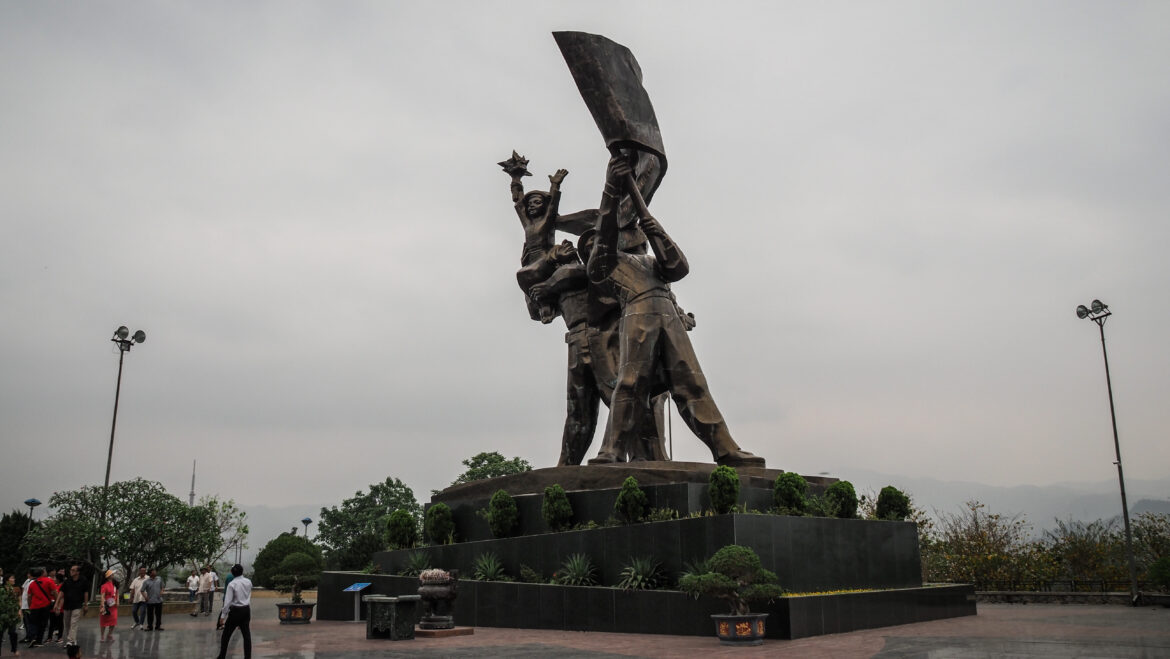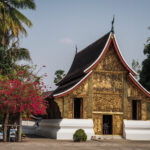The small town near the Laos border was a scene of the famous Battle of Dien Bien Phu fought between the French and the Viet Minh. It began in March 1954 and ended almost two months later in May, with the French losing their final battle and Vietnam becoming a free country. It also turned out to be the beginning of the end of French colonialism.
The French began an operation to place their soldiers at Dien Bien Phu, up in the hills northwest of Tonkin, close to the border with Laos. The purpose was to cut off Viet Minh supply lines into that country and draw the Viet Minh into a major confrontation in order to defeat them. However, it was not Viet Minh who ended up defeated.
Under the leadership of General Vo Nguyen Giap, Viet Minh surrounded and besieged the French. The key to success seemed to be the ability to move bulky weapons through difficult terrain by individual men and women up the rear slopes of the mountains. They dug tunnels through the mountains and arranged the guns to target the French position. It all surprised their opponents and the French garrison was overrun in May after a two-month siege. Most of the foreign forces surrendered.
In 1954 the Geneva Accords were signed. France agreed to withdraw its forces from all its colonies in French Indochina and Vietnam was divided at the 17th parallel, with control of the north given to the Viet Minh as the Democratic Republic of Vietnam under the leadership of Ho Chi Minh, and the south becoming the State of Vietnam, under Emperor Bao Dai. It was to prevent Ho Chi Minh from gaining control of the entire country.
When to go?
In theory, the best time to visit Dien Bien Phu is in spring or early summer so from April to June. I visited at the beginning of April and even though the temperature was pleasant, the air pollution from agriculture burnouts made the whole experience horrible. The visibility was extremely low. I don’t know if every year is the same, but you may consider doing your health a favour and coming in May or June instead.
Keep in mind that there is Victory Day on May 7th and there will certainly be a lot of visitors coming over. Book your accommodation well ahead if you plan to visit on that occasion.
How to get there?
Dien Bien Phu is located in the northwest of Vietnam, near the border with Laos. There is an airport with infrequent flights from Hanoi. For bus connection check 12Go.Asia.
Where to stay?
I spent a night at Guesthouse 51. It’s an okayish place for one night but for 7 EUR (180.000 VND) don’t expect too much luxury. Definitely, some more cleaning could have been done.
How long to stay?
You can walk around the town in half a day. I arrived in the afternoon and left in the late morning on the next day. If you want to visit some sights outside of the town (such as Dien Bien Phu Campaign Command Headquarters), rent a motorbike and stay a full day.
What to see
Dien Bien Phu Museum
It was opened in 1984 to celebrate the 30th anniversary of the battle of Dien Bien Phu. The exhibition is quite big but most of the information is in Vietnamese. You may only find short English descriptions under the photographs. There is an interesting panorama painting on the top floor, which is 132m long, 20.5m high, and 42m in diameter. 4,500 characters are included in the painting which was done by nearly 100 painters. The process took nearly 3 years, from November 2019 to May 2022.
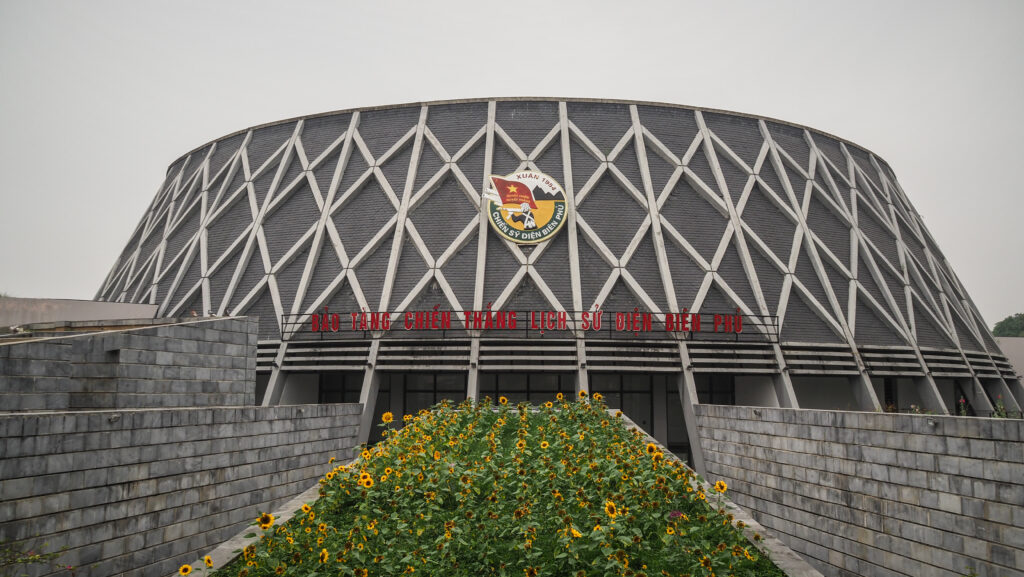
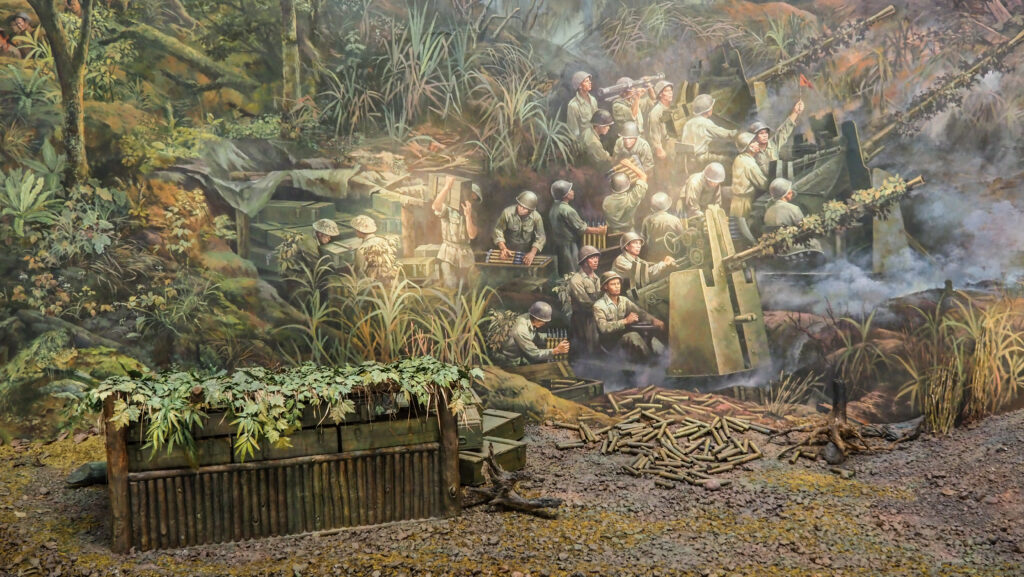
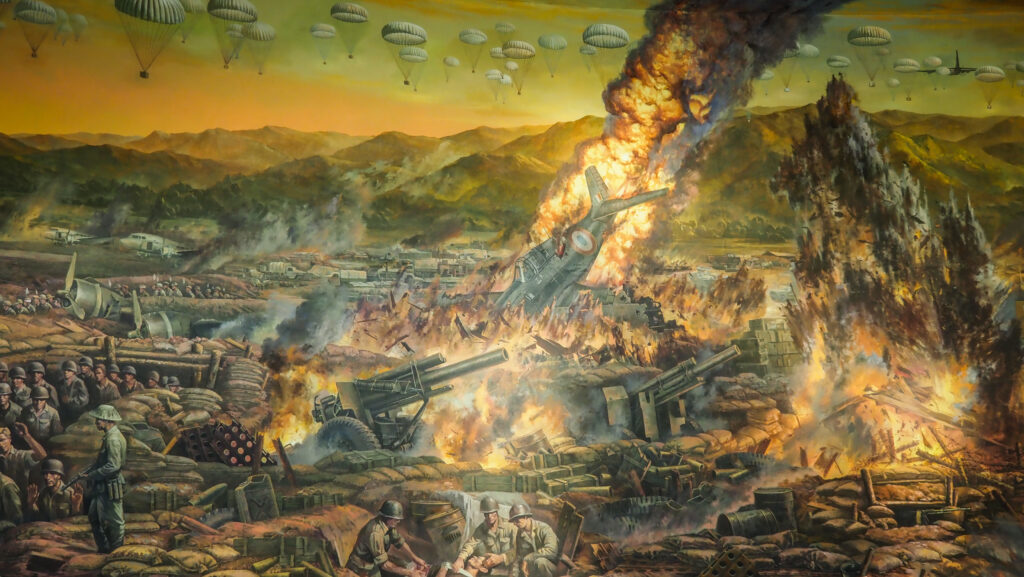
A1 Hill
It was the last of the French strong points, also known as Eliane, to fall to Viet Minh. I found this place to be the most interesting. You can see some trenches, bunkers, tanks, bomb craters, and pillboxes but there is no English explanation. Entry ticket: 20.000 VND.
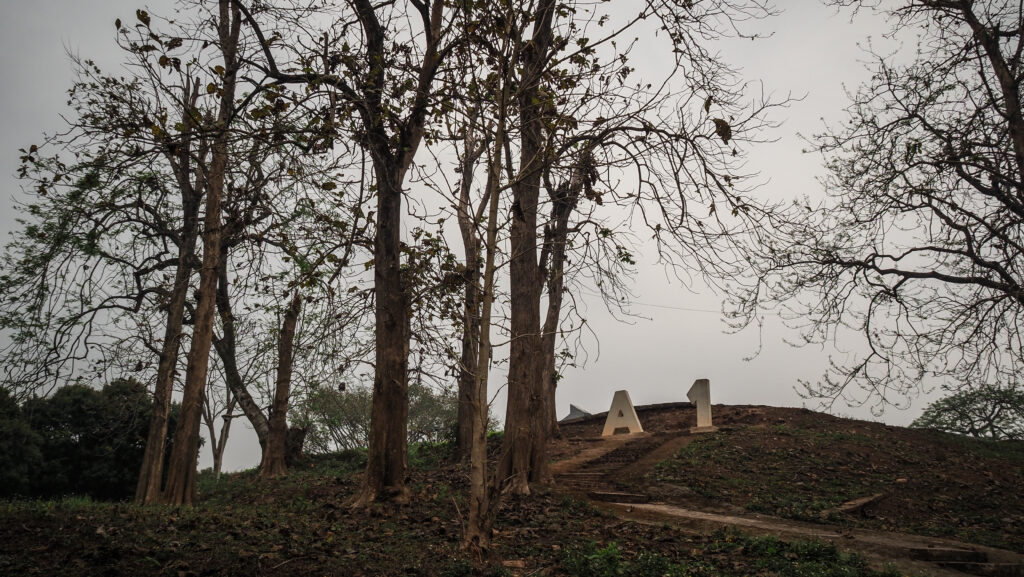
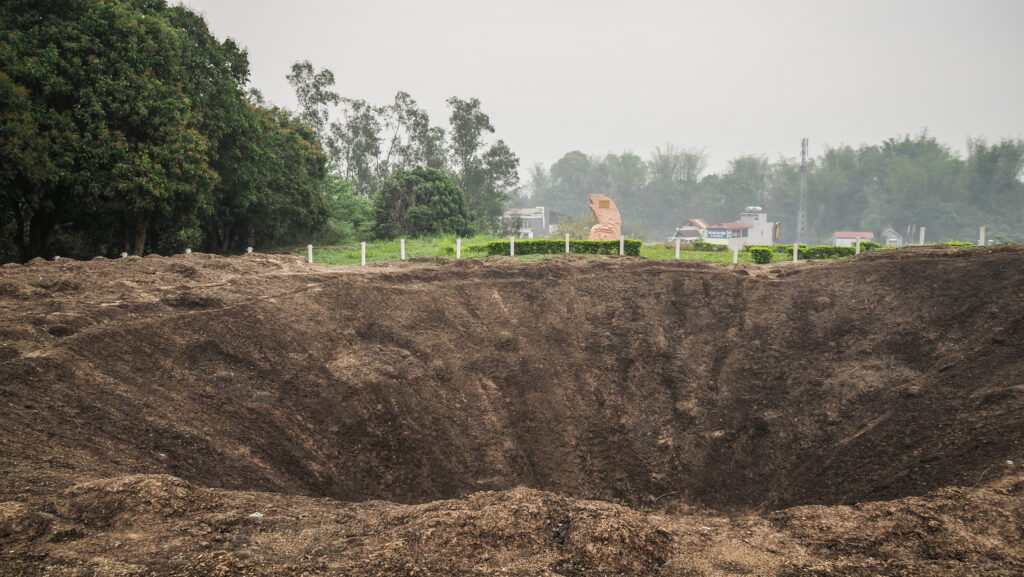
Cemetery
Located just opposite the museum, this small cemetery is the final resting place of the Vietnamese soldiers, who died in the battle of Dien Bien Phu. The identities of most of them are unknown.
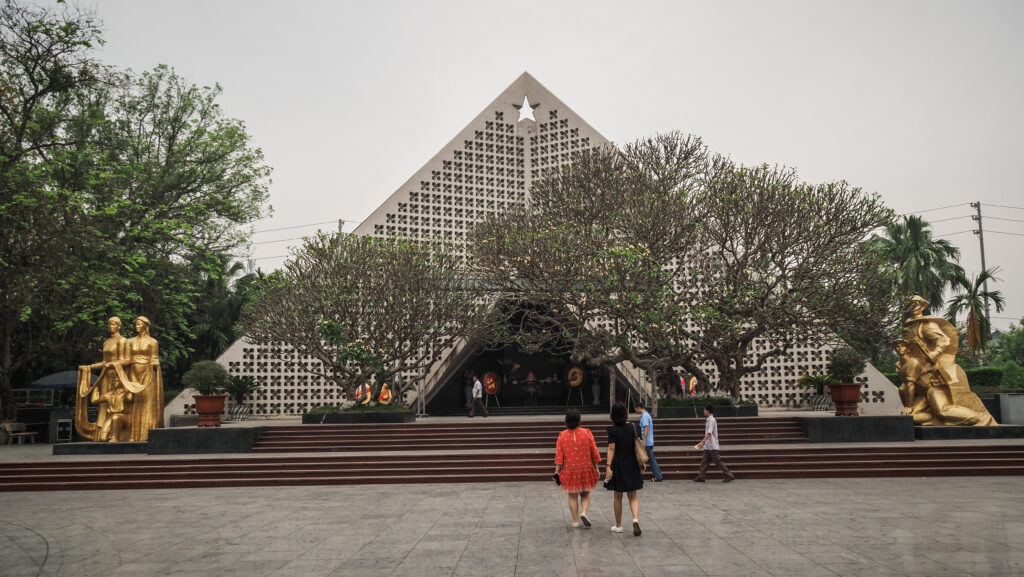
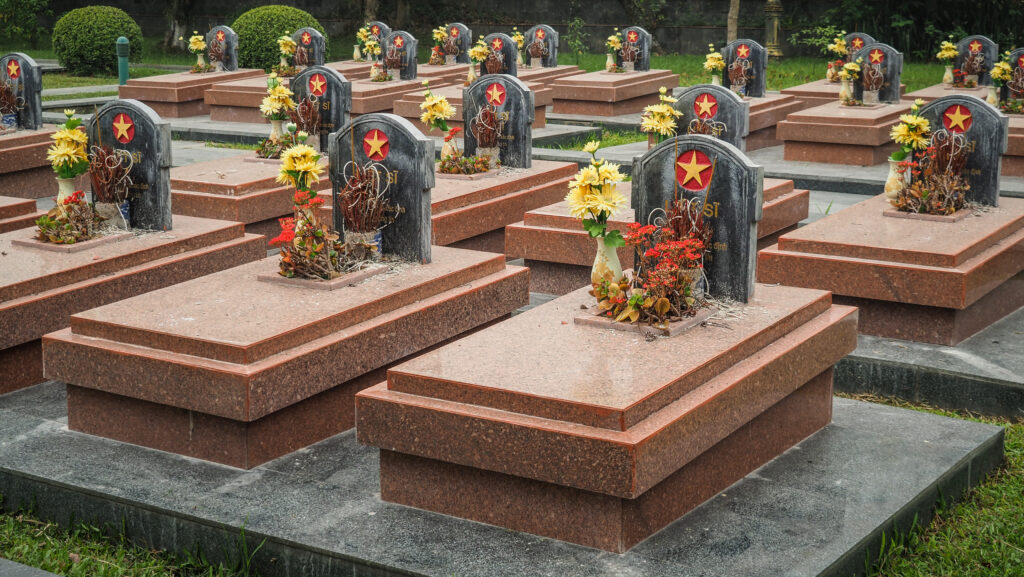
Victory Monument
A huge bronze sculpture honours those who fought and lost their lives in the Battle of Dien Bien Phu. It sits at the top of the hill and can be accessed by road from the back or on foot by climbing the high staircase with nice views over the city. Entry ticket: 20.000 VND.
Bunker of Colonel de Castries
Colonel de Castries was in charge of the seven French posts at Dien Bien Phu and was captured at this bunker on 7th May 1954. Entry ticket: 20.000 VND and the visit won’t take longer than a few minutes.

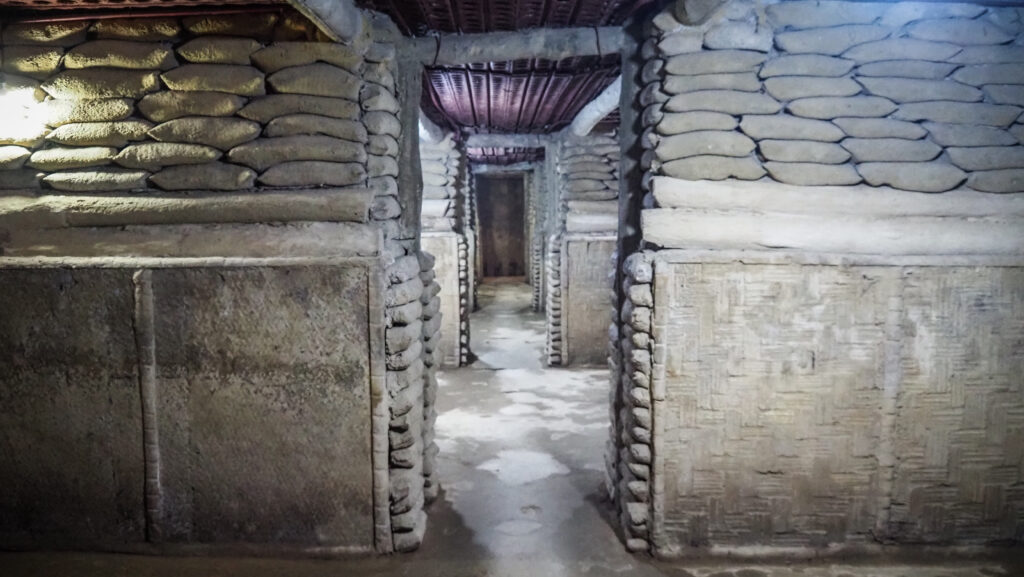
French War Memorial
A nearly unnoticeable French War Memorial was erected on the 30th anniversary of the battle and commemorates the 3000 French troops buried under the rice paddies. It is just south of the de Castries bunker but the entrance gate was closed on the day of my visit.
Muong Thanh Bridge
The old Muong Thanh Bridge across the Nam Ron River was erected by the French. It is 40 meters long and 5 meters wide. Today it is closed to cars but motorbikes can still go over it.
Market
The busiest area of the town is located just nearby Moung Thanh Bridge, on the east bank of the Rom River. Great spot for photography and observing local minority groups. You may notice a lot of women with buns on top of their heads. Those are representatives of the Black Thai ethnic group who mainly live in the provinces of Hoa Binh, Lai Chau, Dien Bien, Son La, Lao Cai, Yen Bai, Thanh Hoa, and Nghe An. Married women do their hair in a bun style while unmarried ones do not tie their hair into a bun but wear an elaborately embroidered scarf.
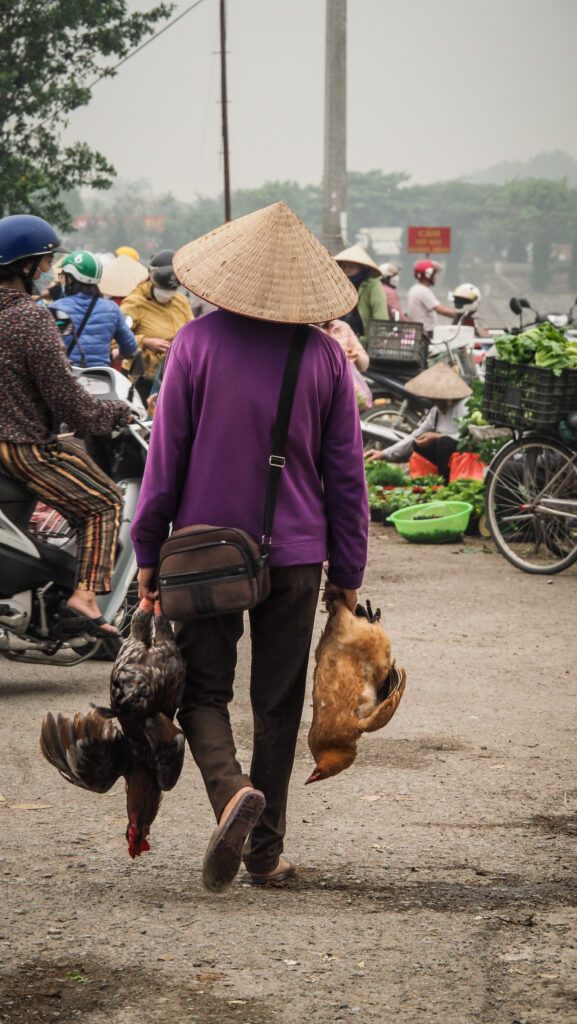


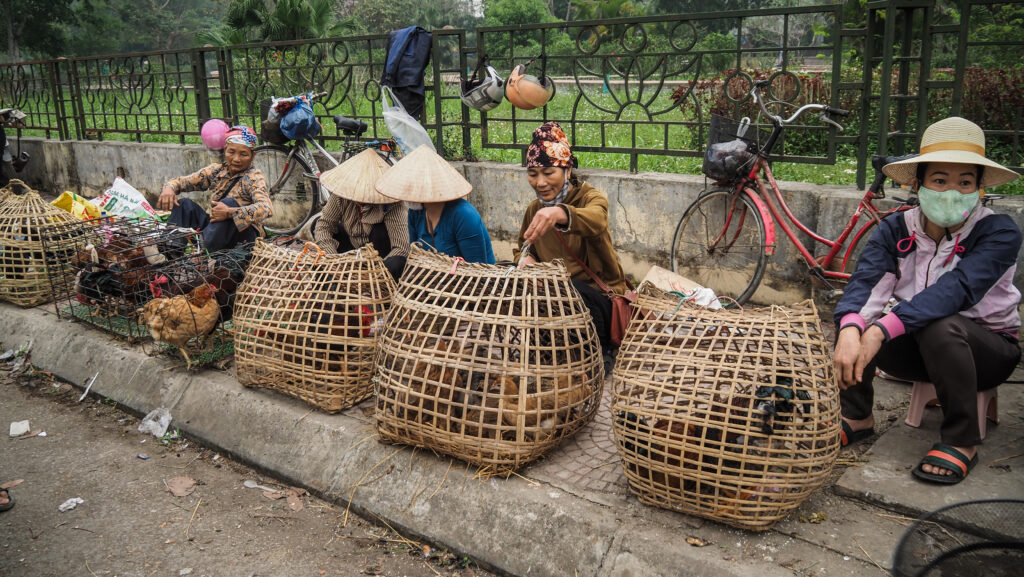
Other interesting places in the area
Dien Bien Phu Campaign Command Headquarters
The site hosts a series of underground rooms hidden in the forest where General Vo Nguyen Giap had his headquarters, made a plan, and commanded the attacks against the French. Very interesting site and it’s fun to walk inside the tunnels. The drive from Dien Bien Phu takes about 40 minutes. Entry is free of charge.

